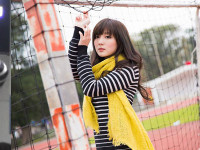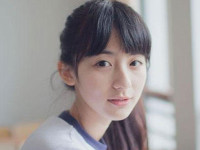CoreText基本知识
来源:互联网 发布:如何提高记忆力 知乎 编辑:程序博客网 时间:2024/06/07 06:15
第一次比较深入接触iOS文字排版相关内容是在12年底,实现某IM项目聊天内容的图文混排,照着nimbus的AttributedLabel和Raywenderlish上的这篇文章《Core Text Tutorial for iOS: Making a Magazine App》改出了一个比较适用于聊天内容展现的图文混排(文字和表情)控件。
选择自己写而不是直接使用现有第三方库的原因有三:
1. 在这之前也做过一个iOS上的IM产品,当时这个模块并不是我负责,图文混排的实现非常诡异(通过二分法计算出文字所占区域大小),效率极低,所以需要重新做一个效率比较高的控件出来。
2. 看过一些开源的实现,包括OHAttribtuedLabel,DTCoreText和Nimbus,总觉得他们实现插入图片的接口有点别扭,对于上层调用者来说CoreText部分不是完全透明的:调用者需要考虑怎么用自己的图片把原来内容替换掉。(当时的印象,现在具体怎么样已经不清楚了)
3. 这是重新造轮子的机会!
直接拿了Nimbus的AttributedLabel作为基础,然后重新整理图文混排那部分的代码,调整接口,一共也就花了一个晚上的时间:拜一下Nimbus的作者们。后来也根据项目的需求做了一些小改动,比如hack iOS7下不准的问题,支持在Label上添加UIView的特性等等。最新的代码可以在github上找到:M80AttributedLabel。
不过写这篇文章最重要的原因不是为了放个代码出来,而是在闲暇时整理一下iOS/OSX文字排版相关的知识。
文字排版的基础概念
字体(Font):和我们平时说的字体不同,计算机意义上的字体表示的是同一大小,同一样式(Style)字形的集合。从这个意义上来说,当我们为文字设置粗体,斜体时其实是使用了另外一种字体(下划线不算)。而平时我们所说的字体只是具有相同设计属性的字体集合,即Font Family或typeface。
字符(Character)和字形(Glyphs):排版过程中一个重要的步骤就是从字符到字形的转换,字符表示信息本身,而字形是它的图形表现形式。字符一般就是指某种编码,如Unicode编码,而字形则是这些编码对应的图片。但是他们之间不是一一对应关系,同个字符的不同字体族,不同字体大小,不同字体样式都对应了不同的字形。而由于连写(Ligatures)的存在,多个字符也会存在对应一个字形的情况。

字形描述集(Glyphs Metris):即字形的各个参数。如下面的两张图:


边框(Bounding Box):一个假想的边框,尽可能地容纳整个字形。
基线(Baseline):一条假想的参照线,以此为基础进行字形的渲染。一般来说是一条横线。
基础原点(Origin):基线上最左侧的点。
行间距(Leading):行与行之间的间距。
字间距(Kerning):字与字之间的距离,为了排版的美观,并不是所有的字形之间的距离都是一致的,但是这个基本步影响到我们的文字排版。
上行高度(Ascent)和下行高度(Decent):一个字形最高点和最低点到基线的距离,前者为正数,而后者为负数。当同一行内有不同字体的文字时,就取最大值作为相应的值。如下图:

红框高度既为当前行的行高,绿线为baseline,绿色到红框上部分为当前行的最大Ascent,绿线到黄线为当前行的最大Desent,而黄框的高即为行间距。由此可以得出:lineHeight = Ascent + |Decent| + Leading。
更加详细的内容可以参考苹果的这篇文档: 《Cocoa Text Architecture Guide》。当然如果要做到更完善的排版,还需要掌握段落排版(Paragragh Style)相关的知识,但是如果只是完成聊天框内的文字排版,以上的基础知识已经够用了。详细的段落样式相关知识可以参考: 《Ruler and Paragraph Style Programming Topics》
CoreText
iOS/OSX中用于描述富文本的类是NSAttributedString,顾名思义,它比NSString多了Attribute的概念。它可以包含很多属性,粗体,斜体,下划线,颜色,背景色等等,每个属性都有其对应的字符区域。在OSX上我们只需解析完毕相应的数据,准备好NSAttributedString即可,底层的绘制完全可以交给相应的控件完成。但是在iOS上就没有这么方便,想要绘制Attributed String就需要用到CoreText了。(当然iOS6之后已经有AttributedLabel了。)
使用CoreText进行NSAttributedString的绘制,最重要的两个概念就是CTFrameSetter和CTFrame。他们的关系如下:

其中CTFramesetter是由CFAttributedString(NSAttributedString)初始化而来,可以认为它是CTFrame的一个Factory,通过传入CGPath生成相应的CTFrame并使用它进行渲染:直接以CTFrame为参数使用CTFrameDraw绘制或者从CTFrame中获取CTLine进行微调后使用CTLineDraw进行绘制。
一个CTFrame是由一行一行的CLine组成,每个CTLine又会包含若干个CTRun(既字形绘制的最小单元),通过相应的方法可以获取到不同位置的CTRun和CTLine,以实现对不同位置touch事件的响应。

图文混排的实现
CoreText实际上并没有相应API直接将一个图片转换为CTRun并进行绘制,它所能做的只是为图片预留相应的空白区域,而真正的绘制则是交由CoreGraphics完成。(像OSX就方便很多,直接将图片打包进NSTextAttachment即可,根本无须操心绘制的事情,所以基于这个想法,M80AttributedLabel的接口和实现也是使用了attachment这么个概念,图片或者UIView都是被当作文字段中的attachment。)
在CoreText中提供了CTRunDelegate这么个Core Foundation类,顾名思义它可以对CTRun进行拓展:AttributedString某个段设置kCTRunDelegateAttributeName属性之后,CoreText使用它生成CTRun是通过当前Delegate的回调来获取自己的ascent,descent和width,而不是根据字体信息。这样就给我们留下了可操作的空间:用一个空白字符作为图片的占位符,设好Delegate,占好位置,然后用CoreGraphics进行图片的绘制。以下就是整个图文混排代码描述的过程:
占位:
- - (void)appendAttachment: (M80AttributedLabelAttachment *)attachment
- {
- attachment.fontAscent = _fontAscent;
- attachment.fontDescent = _fontDescent;
- unichar objectReplacementChar = 0xFFFC;
- NSString *objectReplacementString = [NSString stringWithCharacters:&objectReplacementChar length:1];
- NSMutableAttributedString *attachText = [[NSMutableAttributedString alloc]initWithString:objectReplacementString];
- CTRunDelegateCallbacks callbacks;
- callbacks.version = kCTRunDelegateVersion1;
- callbacks.getAscent = ascentCallback;
- callbacks.getDescent = descentCallback;
- callbacks.getWidth = widthCallback;
- callbacks.dealloc = deallocCallback;
- CTRunDelegateRef delegate = CTRunDelegateCreate(&callbacks, (void *)attachment);
- NSDictionary *attr = [NSDictionary dictionaryWithObjectsAndKeys:(__bridge id)delegate,kCTRunDelegateAttributeName, nil];
- [attachText setAttributes:attr range:NSMakeRange(0, 1)];
- CFRelease(delegate);
- [_attachments addObject:attachment];
- [self appendAttributedText:attachText];
- }
实现委托回调:
- CGFloat ascentCallback(void *ref)
- {
- M80AttributedLabelAttachment *image = (__bridge M80AttributedLabelAttachment *)ref;
- CGFloat ascent = 0;
- CGFloat height = [image boxSize].height;
- switch (image.alignment)
- {
- case M80ImageAlignmentTop:
- ascent = image.fontAscent;
- break;
- case M80ImageAlignmentCenter:
- {
- CGFloat fontAscent = image.fontAscent;
- CGFloat fontDescent = image.fontDescent;
- CGFloat baseLine = (fontAscent + fontDescent) / 2 - fontDescent;
- ascent = height / 2 + baseLine;
- }
- break;
- case M80ImageAlignmentBottom:
- ascent = height - image.fontDescent;
- break;
- default:
- break;
- }
- return ascent;
- }
- CGFloat descentCallback(void *ref)
- {
- M80AttributedLabelAttachment *image = (__bridge M80AttributedLabelAttachment *)ref;
- CGFloat descent = 0;
- CGFloat height = [image boxSize].height;
- switch (image.alignment)
- {
- case M80ImageAlignmentTop:
- {
- descent = height - image.fontAscent;
- break;
- }
- case M80ImageAlignmentCenter:
- {
- CGFloat fontAscent = image.fontAscent;
- CGFloat fontDescent = image.fontDescent;
- CGFloat baseLine = (fontAscent + fontDescent) / 2 - fontDescent;
- descent = height / 2 - baseLine;
- }
- break;
- case M80ImageAlignmentBottom:
- {
- descent = image.fontDescent;
- break;
- }
- default:
- break;
- }
- return descent;
- }
- CGFloat widthCallback(void* ref)
- {
- M80AttributedLabelAttachment *image = (__bridge M80AttributedLabelAttachment *)ref;
- return [image boxSize].width;
- }
真正的绘制:
- - (void)drawAttachments
- {
- if ([_attachments count] == 0)
- {
- return;
- }
- CGContextRef ctx = UIGraphicsGetCurrentContext();
- if (ctx == nil)
- {
- return;
- }
- CFArrayRef lines = CTFrameGetLines(_textFrame);
- CFIndex lineCount = CFArrayGetCount(lines);
- CGPoint lineOrigins[lineCount];
- CTFrameGetLineOrigins(_textFrame, CFRangeMake(0, 0), lineOrigins);
- NSInteger numberOfLines = [self numberOfDisplayedLines];
- for (CFIndex i = 0; i < numberOfLines; i++)
- {
- CTLineRef line = CFArrayGetValueAtIndex(lines, i);
- CFArrayRef runs = CTLineGetGlyphRuns(line);
- CFIndex runCount = CFArrayGetCount(runs);
- CGPoint lineOrigin = lineOrigins[i];
- CGFloat lineAscent;
- CGFloat lineDescent;
- CTLineGetTypographicBounds(line, &lineAscent, &lineDescent, NULL);
- CGFloat lineHeight = lineAscent + lineDescent;
- CGFloat lineBottomY = lineOrigin.y - lineDescent;
- // Iterate through each of the "runs" (i.e. a chunk of text) and find the runs that
- // intersect with the range.
- for (CFIndex k = 0; k < runCount; k++)
- {
- CTRunRef run = CFArrayGetValueAtIndex(runs, k);
- NSDictionary *runAttributes = (NSDictionary *)CTRunGetAttributes(run);
- CTRunDelegateRef delegate = (__bridge CTRunDelegateRef)[runAttributes valueForKey:(id)kCTRunDelegateAttributeName];
- if (nil == delegate)
- {
- continue;
- }
- M80AttributedLabelAttachment* attributedImage = (M80AttributedLabelAttachment *)CTRunDelegateGetRefCon(delegate);
- CGFloat ascent = 0.0f;
- CGFloat descent = 0.0f;
- CGFloat width = (CGFloat)CTRunGetTypographicBounds(run,
- CFRangeMake(0, 0),
- &ascent,
- &descent,
- NULL);
- CGFloat imageBoxHeight = [attributedImage boxSize].height;
- CGFloat xOffset = CTLineGetOffsetForStringIndex(line, CTRunGetStringRange(run).location, nil);
- CGFloat imageBoxOriginY = 0.0f;
- switch (attributedImage.alignment)
- {
- case M80ImageAlignmentTop:
- imageBoxOriginY = lineBottomY + (lineHeight - imageBoxHeight);
- break;
- case M80ImageAlignmentCenter:
- imageBoxOriginY = lineBottomY + (lineHeight - imageBoxHeight) / 2.0;
- break;
- case M80ImageAlignmentBottom:
- imageBoxOriginY = lineBottomY;
- break;
- }
- CGRect rect = CGRectMake(lineOrigin.x + xOffset, imageBoxOriginY, width, imageBoxHeight);
- UIEdgeInsets flippedMargins = attributedImage.margin;
- CGFloat top = flippedMargins.top;
- flippedMargins.top = flippedMargins.bottom;
- flippedMargins.bottom = top;
- CGRect attatchmentRect = UIEdgeInsetsInsetRect(rect, flippedMargins);
- id content = attributedImage.content;
- if ([content isKindOfClass:[UIImage class]])
- {
- CGContextDrawImage(ctx, attatchmentRect, ((UIImage *)content).CGImage);
- }
- else if ([content isKindOfClass:[UIView class]])
- {
- UIView *view = (UIView *)content;
- if (view.superview == nil)
- {
- [self addSubview:view];
- }
- CGRect viewFrame = CGRectMake(attatchmentRect.origin.x,
- self.bounds.size.height - attatchmentRect.origin.y - attatchmentRect.size.height,
- attatchmentRect.size.width,
- attatchmentRect.size.height);
- [view setFrame:viewFrame];
- }
- else
- {
- NSLog(@"Attachment Content Not Supported %@",content);
- }
- }
- }
- }
原文地址:
0 0
- CoreText基本知识
- CoreText绘制基本知识
- iOS CoreText基本知识与用法
- coretext
- CoreText
- coretext
- coreText
- coreText
- coretext
- CoreText
- CoreText
- CoreText
- CoreText
- CoreText
- CoreText
- CoreText
- coreText
- CoreText
- 【安卓】图片浏览器,可以查看局部细节和改变透明度
- linux下执行oracle sql脚本
- mutilSelectDialog..多选框,在选择的时候就显示所选结果
- phpstorm 快捷键设置php注释
- 图解操作系统研发与探索教程
- CoreText基本知识
- MySQL分区
- 源码变换——蓝桥杯2012年Java决赛
- 关于c++的一些自我认识(2)
- 在myeclipse中启动Tomcat时,提示"ava.lang.OutOfMemoryError: Java heap space",解决办法。
- Myeclipse8.5安装Velocity插件
- 几种常见的DIV边框样式
- android:layout_gravity和android:gravity的区别
- CSS3和SVG炫酷鼠标点击按钮效果


